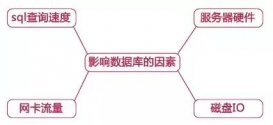本文实例讲述了MySQL联合索引功能与用法。分享给大家供大家参考,具体如下:
联合索引又叫复合索引。对于复合索引:Mysql从左到右的使用索引中的字段,一个查询可以只使用索引中的一部份,但只能是最左侧部分。例如索引是key index (a,b,c). 可以支持a | a,b| a,b,c 3种组合进行查找,但不支持 b,c进行查找 .当最左侧字段是常量引用时,索引就十分有效。
两个或更多个列上的索引被称作复合索引。
利用索引中的附加列,您可以缩小搜索的范围,但使用一个具有两列的索引 不同于使用两个单独的索引。复合索引的结构与电话簿类似,人名由姓和名构成,电话簿首先按姓氏对进行排序,然后按名字对有相同姓氏的人进行排序。如果您知 道姓,电话簿将非常有用;如果您知道姓和名,电话簿则更为有用,但如果您只知道名不姓,电话簿将没有用处。
所以说创建复合索引时,应该仔细考虑列的顺序。对索引中的所有列执行搜索或仅对前几列执行搜索时,复合索引非常有用;仅对后面的任意列执行搜索时,复合索引则没有用处。
如:建立 姓名、年龄、性别的复合索引。
|
1
2
3
4
5
6
7
8
9
10
11
12
13
14
15
16
17
18
19
20
21
22
23
24
25
26
27
28
29
30
31
32
|
create table test(a int,b int,c int,KEY a(a,b,c)); 优: select * from test where a=10 and b>50差: select * from test where a>50优: select * from test order by a差: select * from test order by b差: select * from test order by c优: select * from test where a=10 order by a优: select * from test where a=10 order by b差: select * from test where a=10 order by c优: select * from test where a>10 order by a差: select * from test where a>10 order by b差: select * from test where a>10 order by c优: select * from test where a=10 and b=10 order by a优: select * from test where a=10 and b=10 order by b优: select * from test where a=10 and b=10 order by c优: select * from test where a=10 and b=10 order by a优: select * from test where a=10 and b>10 order by b差: select * from test where a=10 and b>10 order by c |

索引原则
1.索引越少越好
原因:主要在修改数据时,第个索引都要进行更新,降低写速度。
2.最窄的字段放在键的左边
3.避免file sort排序,临时表和表扫描.
希望本文所述对大家MySQL数据库计有所帮助。
原文链接:http://blog.csdn.net/u013474436/article/details/48373043














